Omega vs. Rolex: How Omega is Reaching for the Crown
by Raman Kalra
Raman Kalra is the founder of The Watch Muse blog and has kindly agreed to share some of his articles with us here on Quill & Pad.
___________________________
It is the old age question – Rolex vs. Omega. Which brand should I buy from? Which brand produces better watches? Should I buy an Omega Seamaster Professional 300M or Rolex Submariner? The list goes on. It is nothing new and has been this way for a very long time. Through their histories, the two brands have been going head-to-head whether it’s on design or technology.
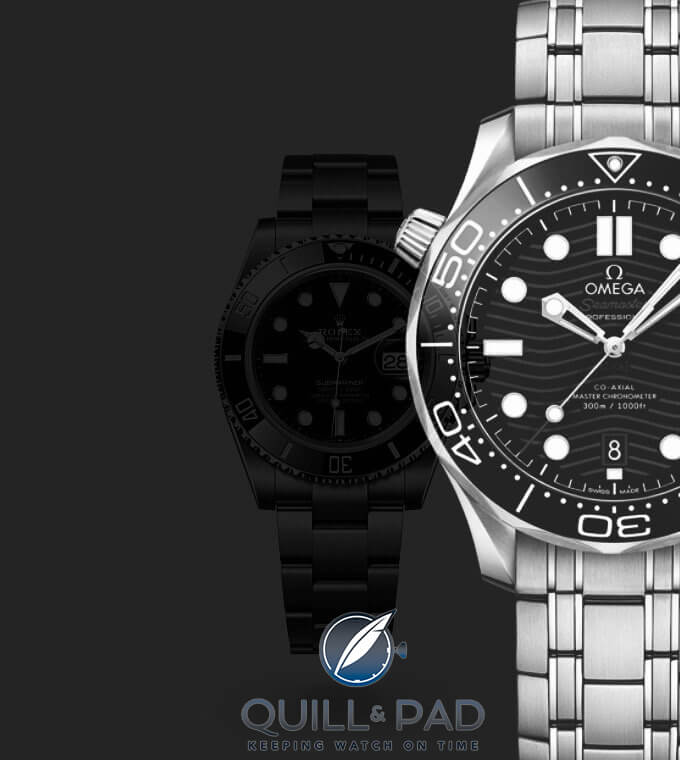
Omega Seamaster
There have even been occurrences where the face-off has been more direct, for example, which watch would NASA use for their Space programs. Each one of you will have a preference between the two brands and there can be no wrong answer. Both are great at what they do, offering a broad range of watches, brand history and recognition. It results in them both being two of the primary household names when it comes to luxury watches.
I don’t think it comes as a surprise, however, that Rolex has the slight edge. Rolex is the standard for most people, including those who don’t consider themselves a watch enthusiast. It comes down to the brand recognition Rolex has created for quality, craftsmanship and luxury, all leading to Rolex typically being the target for a first luxury watch purchase. There is a lot of truth in this and when you take a step back from Rolex, you realize that the majority of their models are iconic (or close to) in their own right, it is an extraordinary achievement.
Omega is extremely close to this though. There is a reason most people know these two brands and not others. Whether this derives from the association Omega has with the Moon landing, James Bond or the Olympics. More recently, Omega has been stepping up and is taking the fight to Rolex. Through their recent releases, technological improvements, and broader watch market trends, they are vying to be the mass-market brand to beat.
Omega wants to be the brand of choice for new and seasoned watch collectors; they want to be the brand that can compete with (and potentially surpass) Rolex at every level. So, how are they attempting this and is it working? Is there anything I would do going forward if I were Omega?
Omega Aiming for the Next Level
In recent years, the watch industry has gained a lot of new interest. Rolex has been at the forefront of this, especially as secondary market prices have skyrocketed. This has made it a challenge to purchase a Rolex through retail channels and has added a further layer of perceived exclusivity. Rolex has not been the only brand to experience this, Omega has as well for a number of references, but Rolex has done so more than anyone else.
This has distorted the view of which brands are competing against each other and in some cases, created situations where the true quality of a watch is not appreciated because of how it trades on the secondary market. Why do I mention this? Sometimes, it can be forgotten that Rolex and Omega are natural competitors. There have been comments in recent years where given the price differentials, you see comparisons not between Omega and Rolex, but rather between Omega and Tudor.
This I disagree with. In fact, looking closer at the moves Omega has made, they are not just putting this (false) statement to rest, they are taking the fight closer to Rolex, and beyond, more than ever. What moves are they making?
————————————————————————————————————–
—————————————————————————————————–
Technology
Watchmaking has always been the intersection between art and engineering. At one time, you might see a brand display its artistic capabilities, and at another, you will see a technological advancement. Omega has taken the technology side extremely seriously and this started with the Co-Axial movement. First launched in 1999, the movement used a Co-Axial escapement invented by George Daniels. It was a turning point in watchmaking being the first new, practical escapement in 250 years.
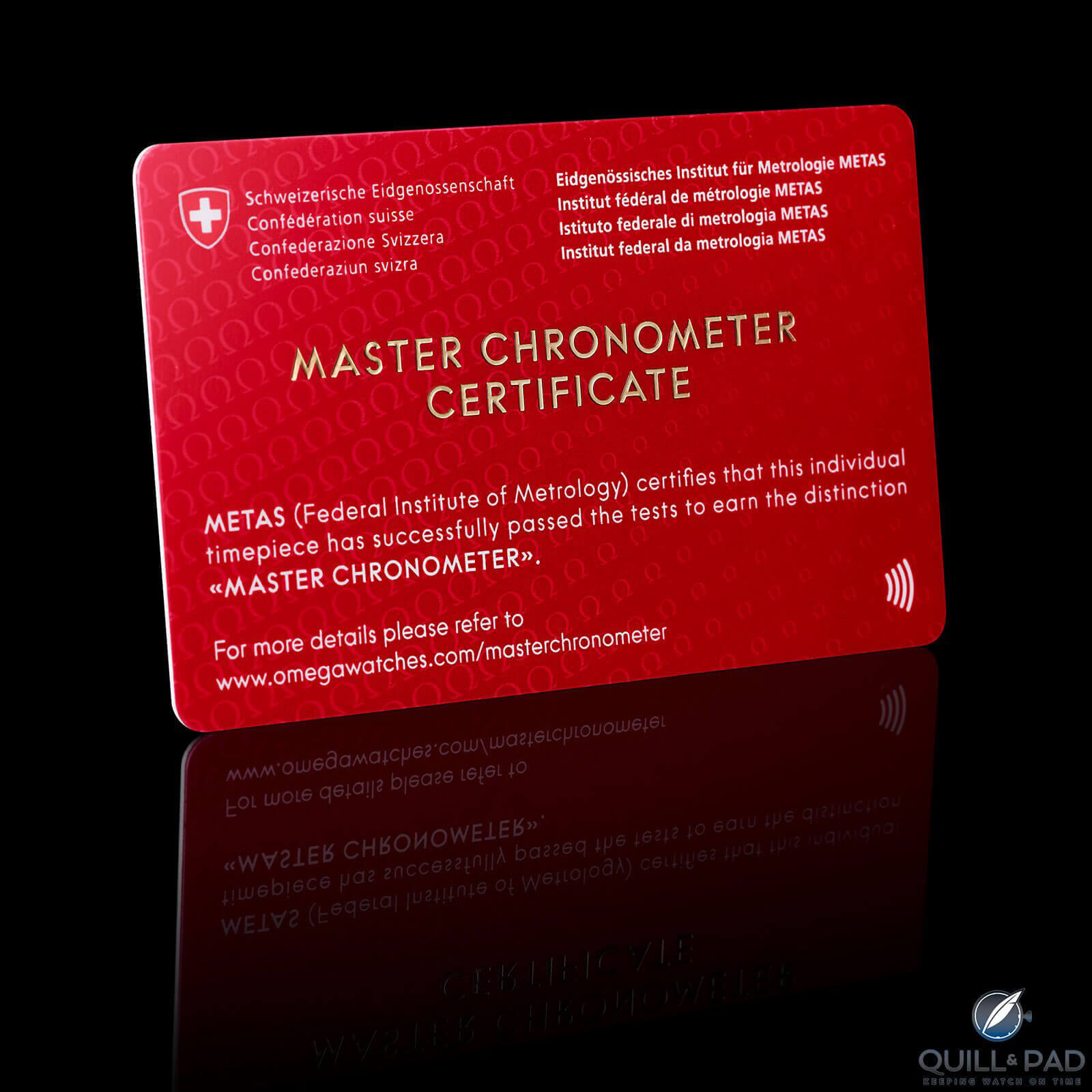
Omega COSC certificate
Through using this Co-Axial design, the escapement experiences much less friction and wear compared to a traditional lever escapement. Further to this, the durability is improved given the design, making it more resistant to external shocks. This arguably improves accuracy given the reduced friction and improved energy transfer. I say arguably because there is some debate around whether this is true, however, the Co-Axial escapement certainly leads to longer servicing intervals.
Obviously, the Co-Axial movement is nothing new now but it is worth highlighting given the majority of their watches feature it.
Since its inception, there have been further updates to the Co-Axial movements, such as the introduction of the silicon balance spring (Si14) in 2008 and then the fully anti-magnetic Co-Axial 8508 found in the Aqua Terra in 2013. However, the next big jump came with the introduction of the METAS certification in 2015. Omega felt it had reached a stage with its movement technology where existing movement certifications did not go far enough to highlight the quality of what they were offering.
The METAS certification requires a further eight tests only once a movement has passed the COSC certification. These further tests include movement performance during magnetic exposure, isochronism which tests the movement at different positions with various power reserve remaining and chronometric precision day-to-day. Rolex does do something similar with their internal testing to achieve “Superlative Chronometer” status guaranteeing the accuracy of +2/-2 second per day. It is easy to see here that they are pushing each other forward.
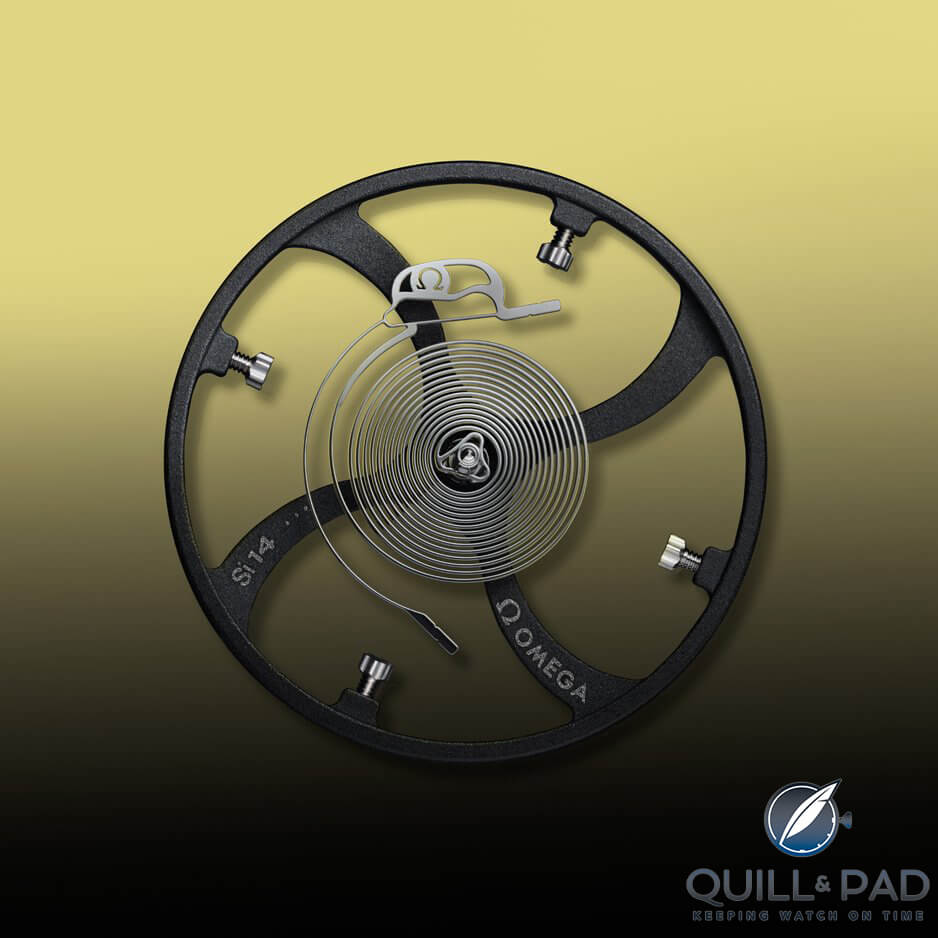
Omega Spirate balance
More recently, we were introduced to the latest technological update from Omega. I am talking about the new Spirate System. There will be many in-depth breakdowns out there so I will try to keep this concise. The Spirate System is a new regulating system that allows Omega to make fine adjustments to the oscillation of the balance wheel by altering the active length of the hairspring. This is achieved through a flexible blade where tension can be added or removed, allowing for micro-adjustments to the hairspring.
The result is a movement accurate to 0/+2 seconds per day. On paper, we can see this change, but when you are wearing a watch day-to-day, will it be noticed? Probably not. However, it demonstrates Omega’s commitment to driving innovation within watchmaking forward.
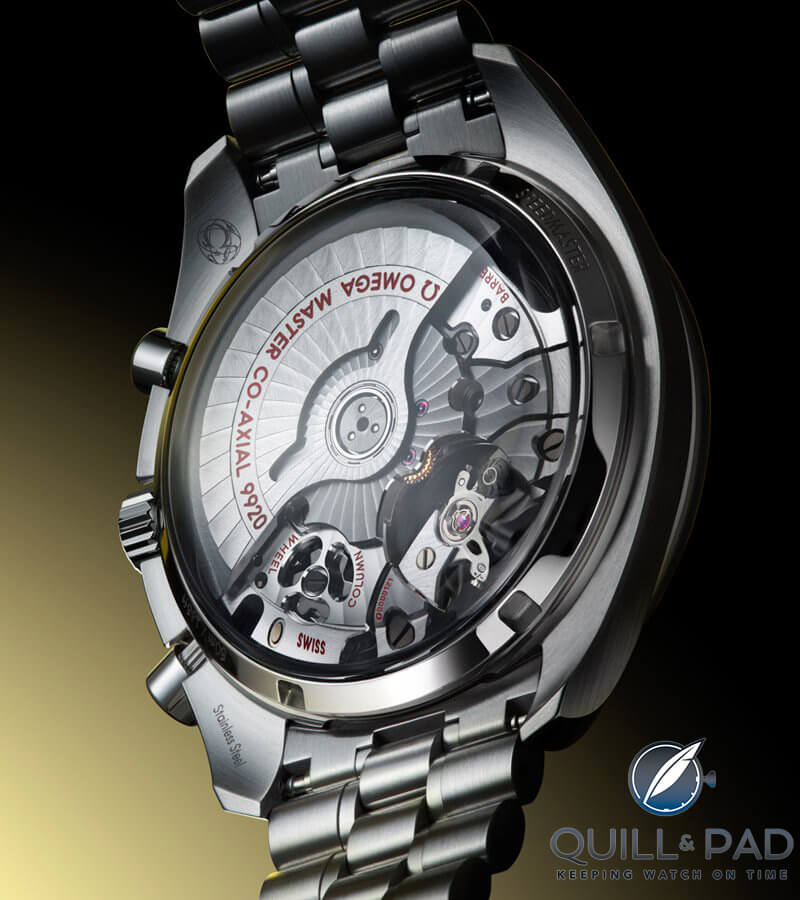
Movement of the Omega Speedmaster SP SuperRacing
Finally, Omega decided to show off the extent of its watchmaking abilities with the launch of the Chrono Chime. A completely unexpected move from the brand that, to some degree, reframes the way you view Omega. This movement is nothing short of an achievement. The calibre is formally known as the Co-Axial Master Chronometer Calibre 1932 and is the most complicated movement they have ever produced. It is a fully integrated split-seconds chronograph and minute-repeater. The minute-repeater does not chime out the time but rather the elapsed chronograph time – never been done before.
It took Omega six years to develop. The movement has been housed in two different cases. The first is a pocket watch-style case known as the Olympic 1932 that brings together their first minute-repeater from 1892 and the pocket chronographs Omega used in the 1932 Olympics.
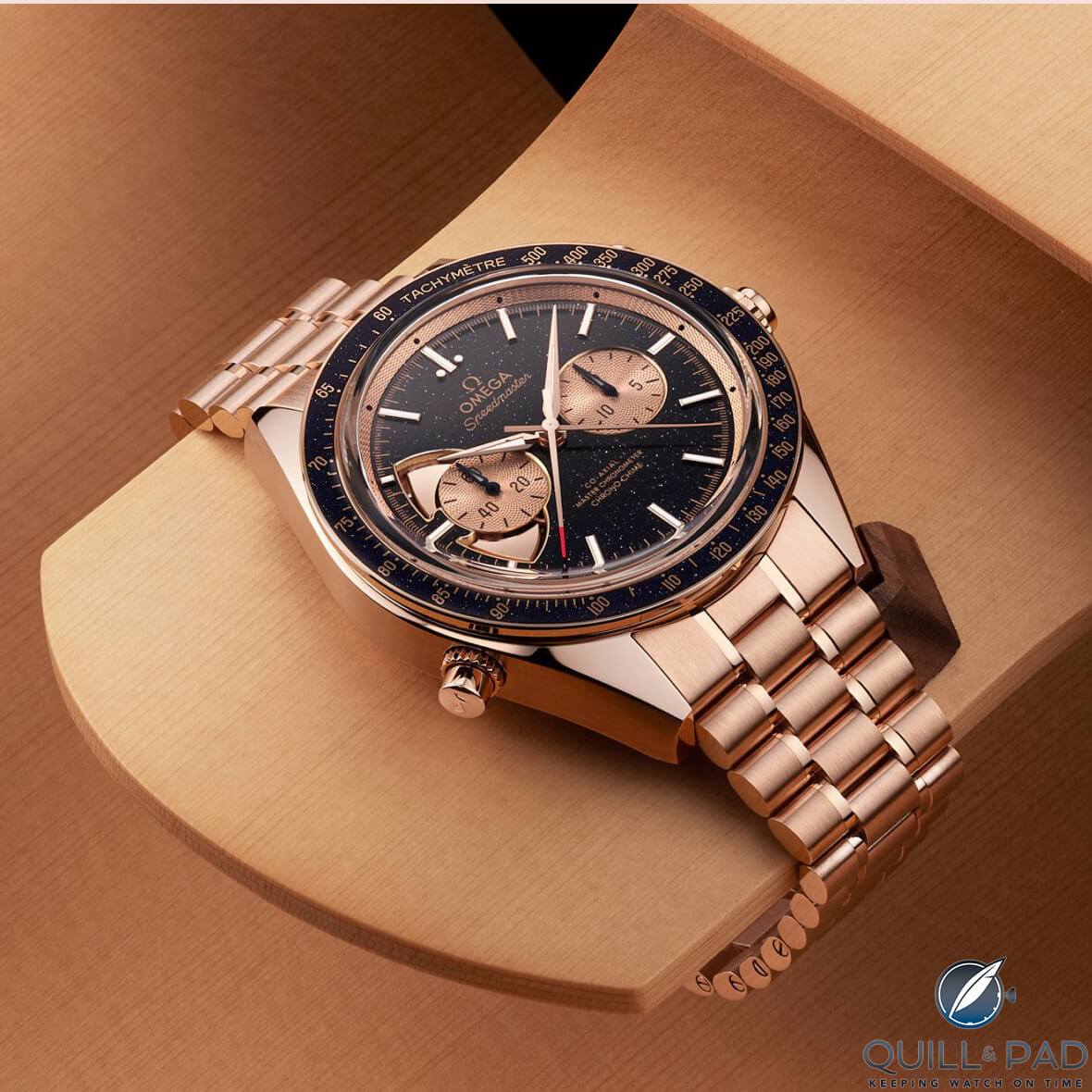
Gold Omega Speedmaster
The second is a Speedmaster – combining their technological achievement with arguably one of the most famous designs in the industry. Both feature open-worked enamel dials that show the gongs, guilloche finishing, and presentation boxes made from walnut that amplify the chime when the watch is placed there. Truly, unlike anything we have seen from Omega and to put it bluntly, this is a real flex from the brand, showing what they are capable of.
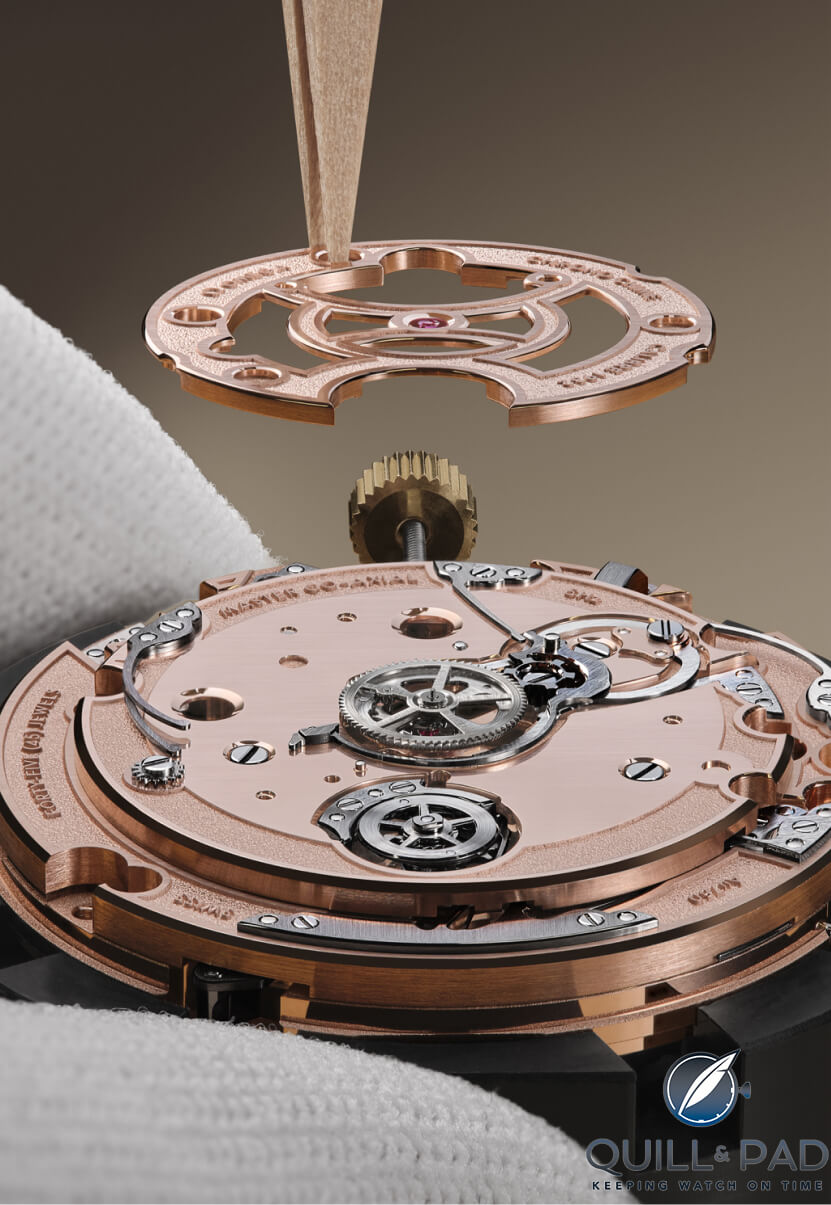
Assembling Omega movement
—————————————————————————————————–
—————————————————————————————————–
Design
There are many great designs out there beyond both Rolex and Omega. Rolex, as mentioned earlier, is in a unique position where practically every range they have is iconic in its own right – think Submariner, GMT Master, Daytona, Explorer, and the list goes on. Omega is somewhat similar but to a lesser extent. Omega has the Speedmaster Moonwatch as well as the Seamaster Professional 300M made famous through the association with James Bond.
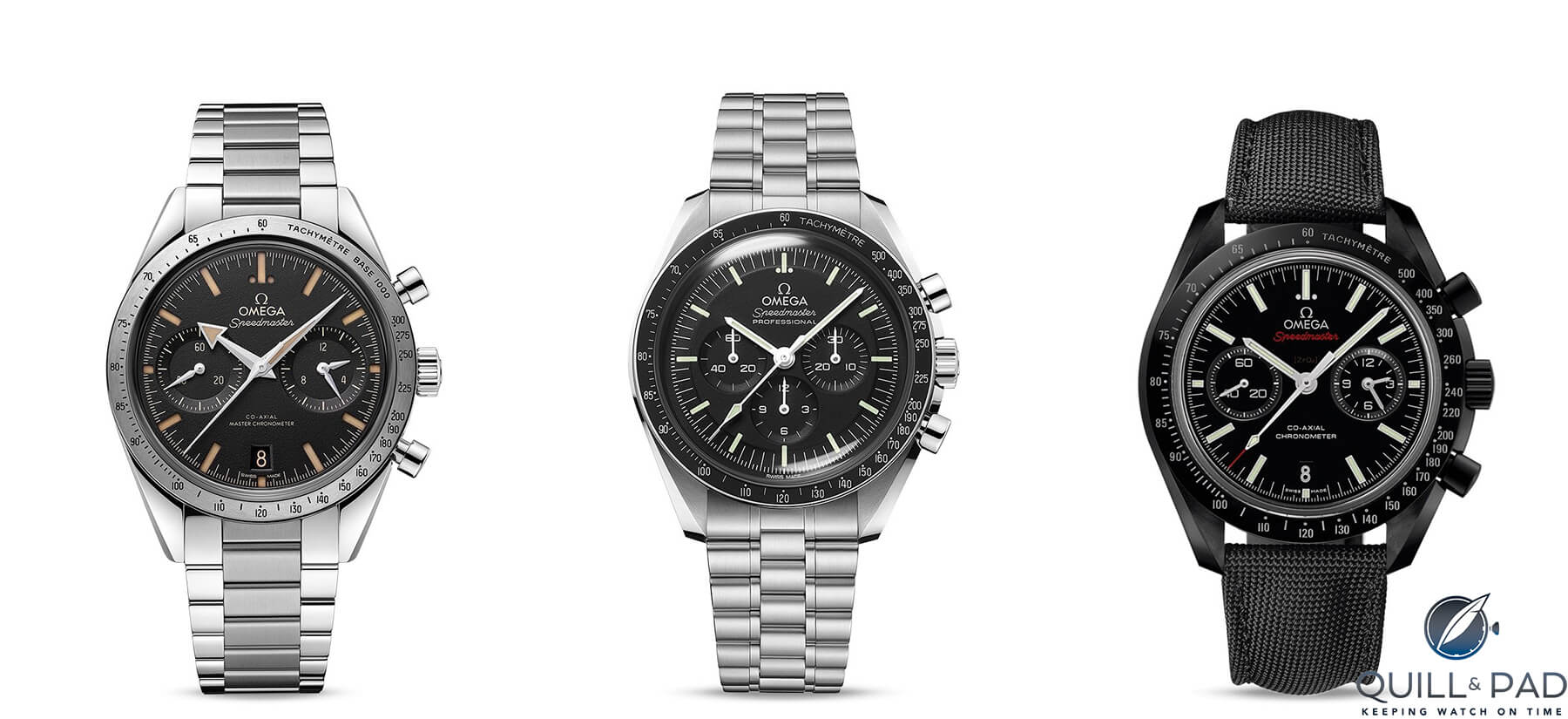
Omega Seamasters
However, they are not able to compete when it comes down to the breadth of icons within their collection. Where Omega excels is in the design of new models, whether they are working within an established range or creating something completely new. There is a fine line between creating a new design that can resemble the famous original but not overpower it – Omega has this mastered. The designs they produce do not just hold a similar aesthetic, they go beyond by adding small, intricate details such as color or material variations, casebacks, and Easter eggs.
For example, they are able to produce a whole host of variations of the Speedmaster, whether it is a Limited Edition Snoopy Moonwatch, Speedmaster ’57 or Speedmaster 38. Likewise, if anyone were to see an image of a Speedmaster Dark Side of the Moon, they would know it is not a Moonwatch but still a Speedmaster given the resemblance. Now, you could argue this leads to a slew of new releases, which is true, but it does mean Omega is able to keep its collection varied, interesting and fresh.
It can also be seen in their Seamaster Professional 300M range, adding new dial and bezel colors, as well as strap options. All these small differences never detract from the originals, they build upon them as Omega looks forward, and this I appreciate.
Their design capabilities don’t stop with building out well-known models. Omega has successfully brought completely new designs to the market in the last 20 years that have become staples in their collection. I am talking about the Aqua Terra, Planet Ocean and Globemaster. All three of these models are completely new and each of them has become a hit in their own way.
Each is distinct and designed in such a way as to make them recognizable yet timeless. I have recently written on the Planet Ocean as I cannot think of another new watch design that has become so identifiable in such a short amount of time. Other brands try to launch new products and some designs can last, but for Omega to have three is remarkable.
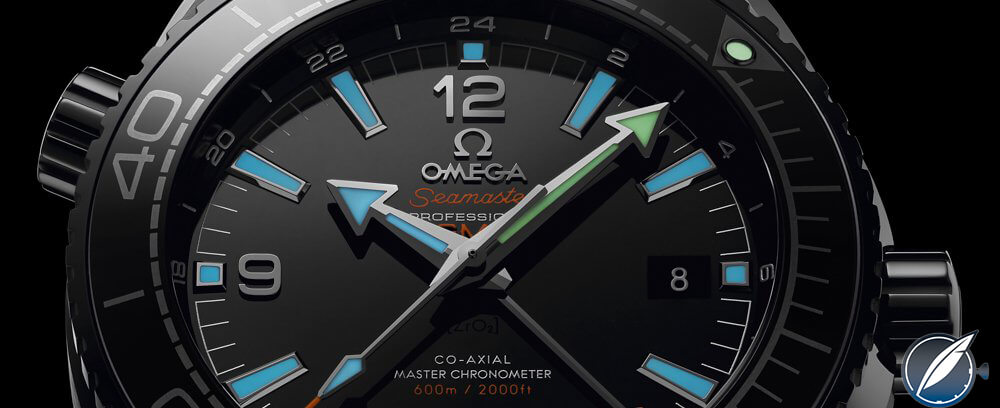
Omega Seamaster Planet Ocean Deep Black
Looking back on Omega’s recent releases, I must say that their Limited Edition watches seem to be reaching new heights. Specifically, the Bond Seamaster Limited Editions from the past few years are noteworthy. Take, for example, the 2020 edition with its sleek and understated design. Its tropical indices and bezel, full titanium case, and mesh bracelet make it one of the most successful Bond collaborations in recent memory.
In 2022, the next Bond collaboration was launched through two references. The stainless steel is much more understated compared to editions of the past, but still showcases Omega’s creativity with a caseback that replicates the iconic Bond opening sequence. It is in constant motion as it is linked to the seconds hand. The second reference is more unique and won’t be for everyone. It features a green-to-yellow gradient diamond bezel in a nod to Ian Fleming’s connection to Jamaica.
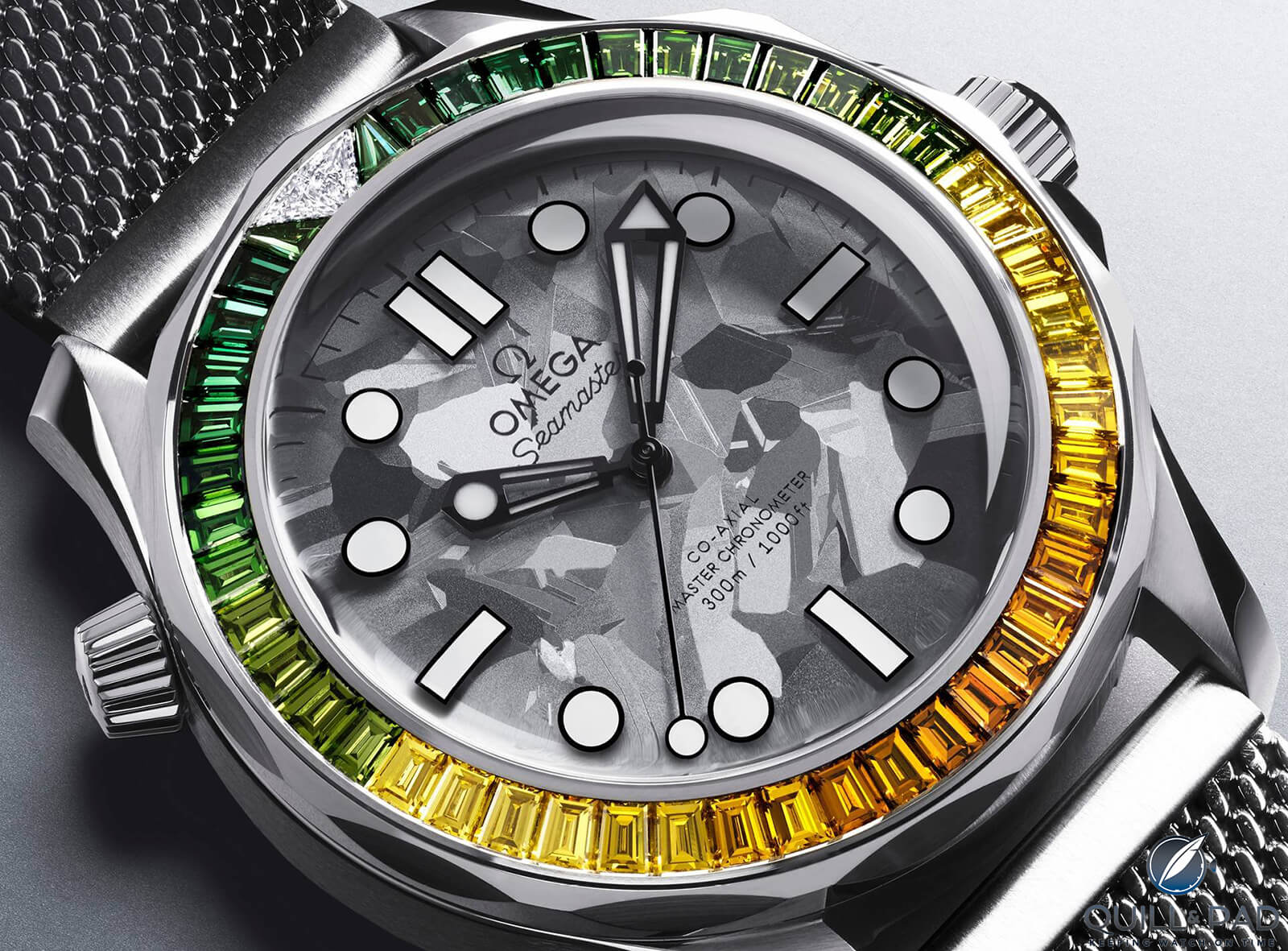
Omega Seamaster 60th LS James Bond
Each dial is a unique grey silicon and the case comes in Omegas Canopus Gold (a white gold alloy). Even if this is a divisive take on a Bond Seamaster, it again demonstrates the direction of Omega. It is highlighting its ability to work with gemstones and to think outside the box. All with the aim of moving brand perceptions further upward.
—————————————————————————————————–
—————————————————————————————————–
Marketing
There are very clear connections between Omega and pop culture, whether that’s through James Bond, the Olympics or the Moon landing. However, there have been a few marketing tactics that have stood out more recently that are bringing new attention to the brand, and others that are highlighting the breadth of Omega in ingenious ways.
This might divide as it has been a contentious topic within watch communities. You will also have your own views on whether this can be considered a marketing tactic, but frankly, looking at the effect with the benefit of hindsight, it has to be viewed as one. I am talking about the Omega x Swatch MoonSwatch. There have been very few, if any, releases that have had such a broad impact.
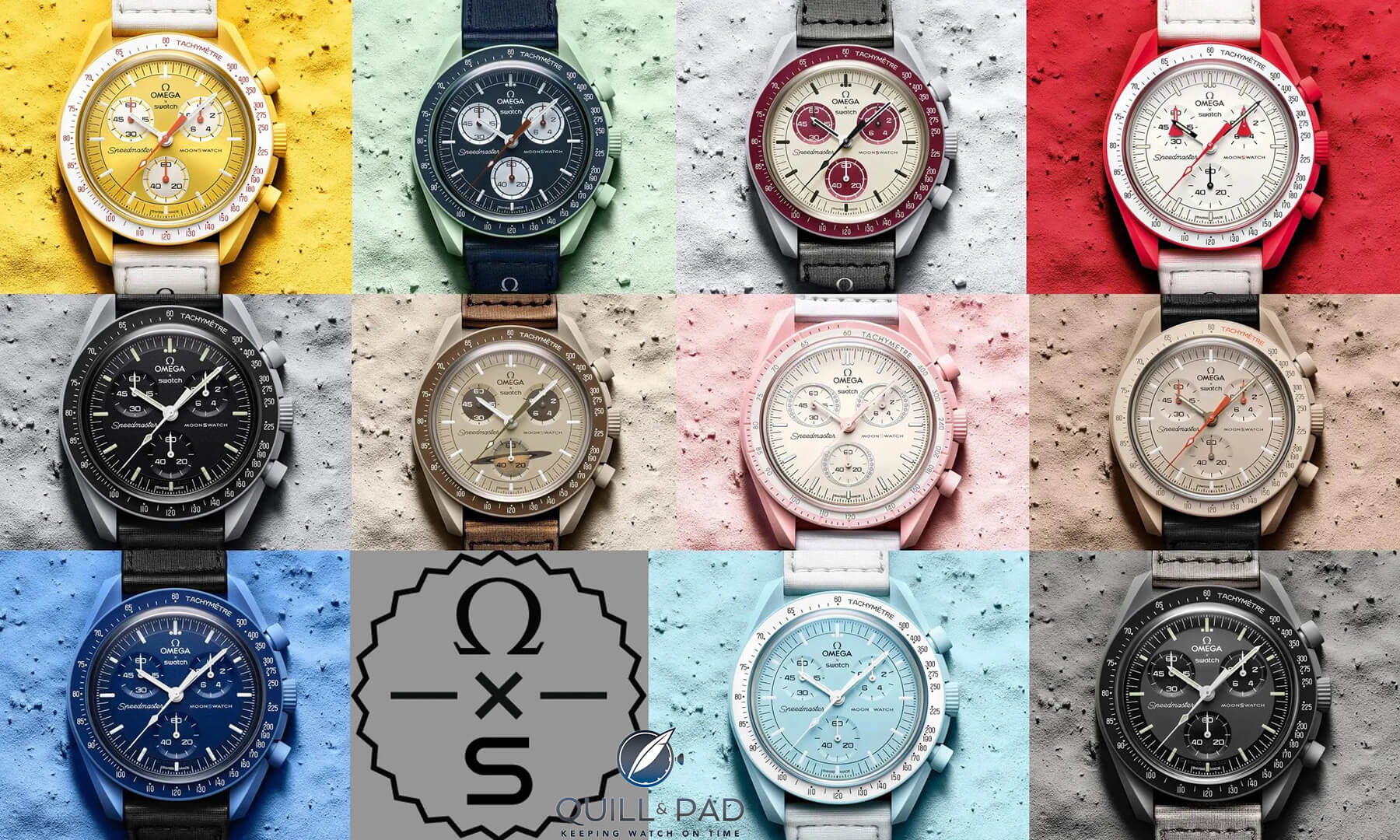
Omega-Swatch MoonSwatch all models
Watch enthusiasts will always be queueing for the next hottest launch and we see that every year across multiple brands, but this went beyond that. Consumers who had no interest in watches were suddenly queuing across the globe for hours to get their hands on the MoonSwatch. I don’t need to spell out what the watches are, however, to summarize, they are a Swatch (yes, not an Omega…) that uses the legendary Moonwatch design and Omega branding in a wide variety of colors.
The impact has been unimaginable. Overnight, it was no longer must have to have the Apple Watch or any other competitor. It was the MoonSwatch.
Why was this clever? Firstly, it highlighted just how great the Moonwatch design is. The hope, and subsequently the result, was that as more people experienced the design at an affordable price point they would end up wanting the real thing.
Secondly, for those who do not have much interest in luxury watches, it brought their attention to Omega, the Speedmaster and the importance of the Moonwatch. It might seem unimaginable that a luxury brand would offer its name and design for such an entry-level watch, but I imagine Omega took the longer-term view – get people enticed by the brand and be there to offer them luxury watches when the time comes.
In a sense, Omega cast its net both towards consumers at the entry-level and high horology (Chrono Chime) within the same year.
The marketing side can always be seen via the association with space, but they truly shine during anniversary years. The recent Seamaster 75th anniversary was probably one of the best, most coherent launches I have seen. Omega has the iconic Seamaster range in its collection, however, over the 75 years of existence it has grown to hold a wide variety of watches that all revolve around the sea.

Omega Seamaster collection
To celebrate, rather than highlighting one specific model or releasing a vintage-inspired reissue, Omega chose to celebrate everything that carried the Seamaster name. This resulted in eight new watches, which even included the return of the Ploprof. Each dial on these watches is a slightly different shade of blue, depending on the depth rating, creating a perfectly gradual progression.
This showcases the true accomplishment of the range’s evolution and is an intelligent way to demonstrate the breadth of Omega. The Seamaster is not just one particular watch produced in 1948, but a whole idea that has led to a recognizable name across a number of extremely popular designs.
—————————————————————————————————–
—————————————————————————————————–
Customer Experience
This is the big one. As the watch industry has gained more interest from a broad range of consumers given factors like ease of information (YouTube, Instagram etc.), social media influences and investment purposes, the imbalance between supply and demand has broadened. This has led to the secondary market prices for some watches reaching exceptionally high levels, only fueling more speculators that then add to the demand further.
I mentioned this at the top of this article given Rolex has been one of, if not the most, affected name. Obviously, this is a massive positive for them. What company wouldn’t want extensive waiting lists for pretty much every product produced?
However, this phenomenon has brought about some challenges, namely purchasing a watch in a boutique at retail price. I know, something as simple as purchasing a product has become difficult. There are other challenges that ADs are facing and that is the allocation of popular models to “true collectors” and not those looking to quickly profit. It is a difficult subject to break down and has led to some questionable practices which I just try to avoid altogether!
Given Rolex has been the most affected at the price point, it has directly impacted the broadest set of consumers. The experience of going into a Rolex boutique has subsequently changed. Omega, on the other hand, now has this opportunity as people are looking beyond Rolex for a luxury watch that they can purchase where and when they want. Omega knows this.
Each Omega boutique is well-stocked with practically all models available to try on and purchase. Likewise, if you know what you like, there is always the option to purchase online. Anecdotally, and this is my opinion, they also have some of the most attentive and knowledgeable sales staff in their boutiques (in the UK at least).
Don’t take just my word for it, look at the number of people on forums and YouTube that say similar. If you can, I recommend making the trip and experiencing it for yourself. It’s difficult to measure the quality of a customer experience, but it’s clear that Omega is either hiring the right people or doing an excellent job of training their employees. Overall, a visit to an Omega boutique is likely to result in a positive experience.
I want to revisit the new Spirate System. It is a technological achievement, however, there is one aspect that doesn’t make the headlines – adjusting the Spirate System to regulate your watch can be done in boutiques. The watch does not need to be sent to Switzerland for a number of months, but it can be done in-store.
The clever aspect of this is the ownership experience of an Omega with the technology (only one reference is available for now) is enhanced. You are able to maintain the accuracy of your watch while interacting with the brand and being in their boutique even if you weren’t intending to browse. It can create a deeper connection to the brand that you own.
Omega is looking for ways to interact with its customers and make each feel seen. The thing with brand loyalty is that it can be created through good products, creating an impression and desire, and after-sales service quality. They are looking to get as many customers as possible, naturally, but there is now this whole group that is unable to purchase a Rolex without being on a waiting list.
What is the next best-known brand? Omega. By doing so, the aim is that people will experience an Omega and understand the quality and history on offer, in the hope they are repeat customers.
—————————————————————————————————–
—————————————————————————————————–
What Might Be Next?
From multiple angles, Omega is pushing forward to try and become the go-to brand for the majority. Whether this is through targeted upgrades and releases for the seasoned collector or just appealing to those looking for a luxury watch that has some historical importance or relevance. I do believe that the small steps they are taking are moving them in the right direction, although any competition against Rolex is an extremely tough one.
Nevertheless, there are further aspects that I feel Omega could improve on as a next step. These are all my opinions and would be the steps that I would take if I found myself making the decisions for them. I would love to hear what you would do!
Simplification
I want to start with the idea of simplification. Typically, the most successful companies are those with a clear product line that does not confuse and overwhelm their customers. Breitling’s recent leadership under Georges Kern has shown the benefits of this approach and I believe that Omega could benefit from a similar approach.
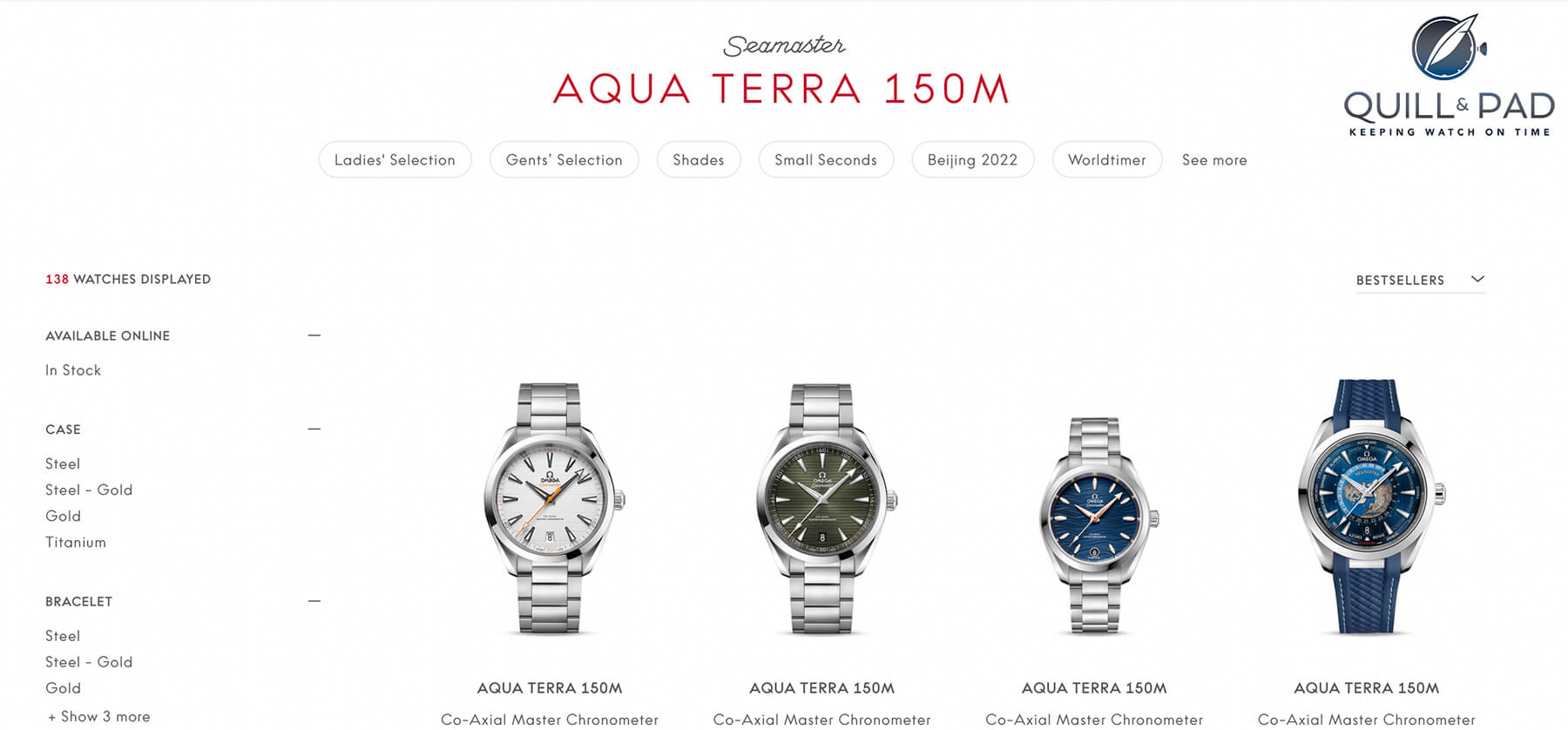
Omega Aqua Terras
Let us consider a few examples. Firstly, the Aqua Terra. An incredible, everyday option sitting in the Seamaster range. However, Omega currently offers over 130 Aqua Terra references alone. Let that sink in. There are size options, dial colors, bracelet and strap options, and complications. There is a positive to having options, but the real issue is that there is a lack of coherence between what is on offer here.
Now, Rolex has a similar situation with the Datejust and I have to call this out in fairness. Even so, despite the various options, it is easier to understand the range. The online configurator helps with this.
The Aqua Terra does not have the same clarity. On top of that, the Datejust is technically a whole range rather than a sub-product beneath the Seamster family. Similarly, the same can be said about the Speedmaster and Seamaster 300M. Understanding which reference sits where in their collection hierarchy is a challenge, yet Rolex (away from the Datejust and Oyster Perpetual) is very clear on what is on offer and which model it is.
Secondly, Omega is very effective at offering both modern and vintage-inspired heritage models alongside each other. This next suggestion is minor, although I think it could enhance the storytelling and product clarity. Currently, Omega has four main collections: Seamster, Speedmaster, Constellation and De Ville.
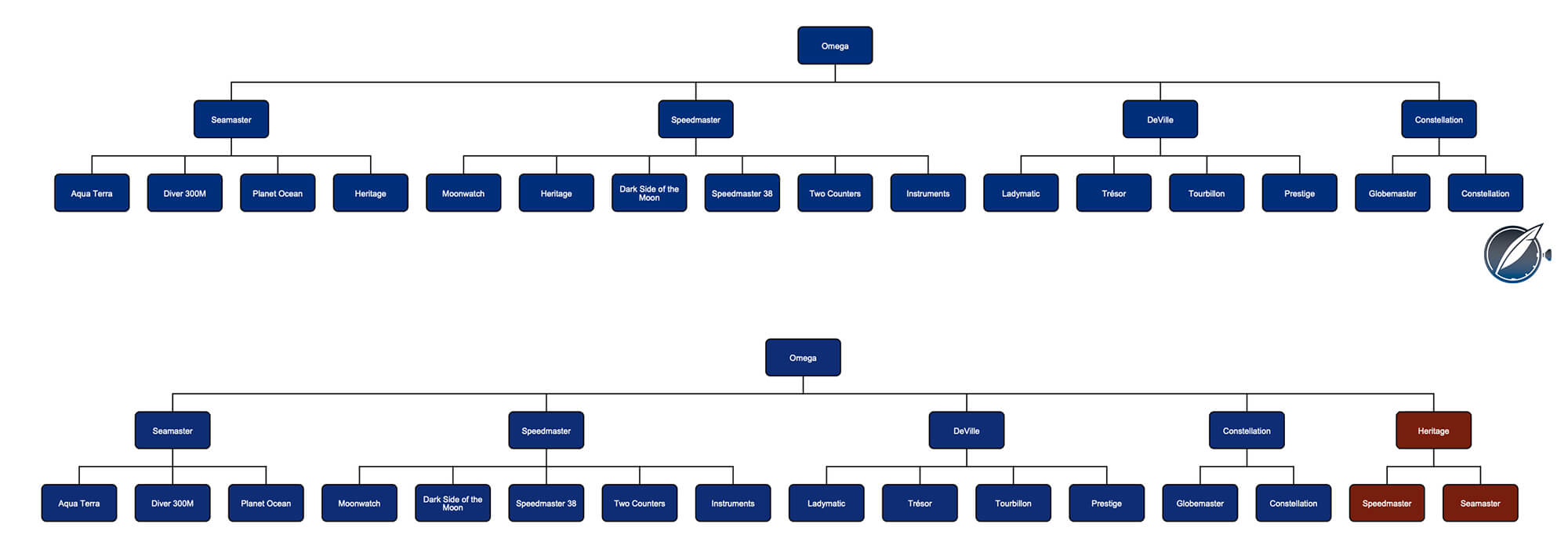
Omega collections
Why not add a fifth called Heritage? Put all the heritage references together under one category, create a new webpage highlighting their importance and even create a separate area in the boutiques that can be designed to stand out. It could feel more like a museum display that you would be able to purchase from.
Currently, by having the Speedmaster ’57 sitting next to a Moonwatch sitting next to a Dark Side of the Moon, there is very little differentiation and requires an explanation for those who don’t know.
—————————————————————————————————–
—————————————————————————————————–
Boutiques
The next area that I would focus on would be the boutiques themselves. Currently, their boutiques have a luxurious feel about them, combining red, gold and light wood. Obviously, when selling products such as theirs, the luxury factor is important. However, I feel that their boutiques don’t relate to their watches.
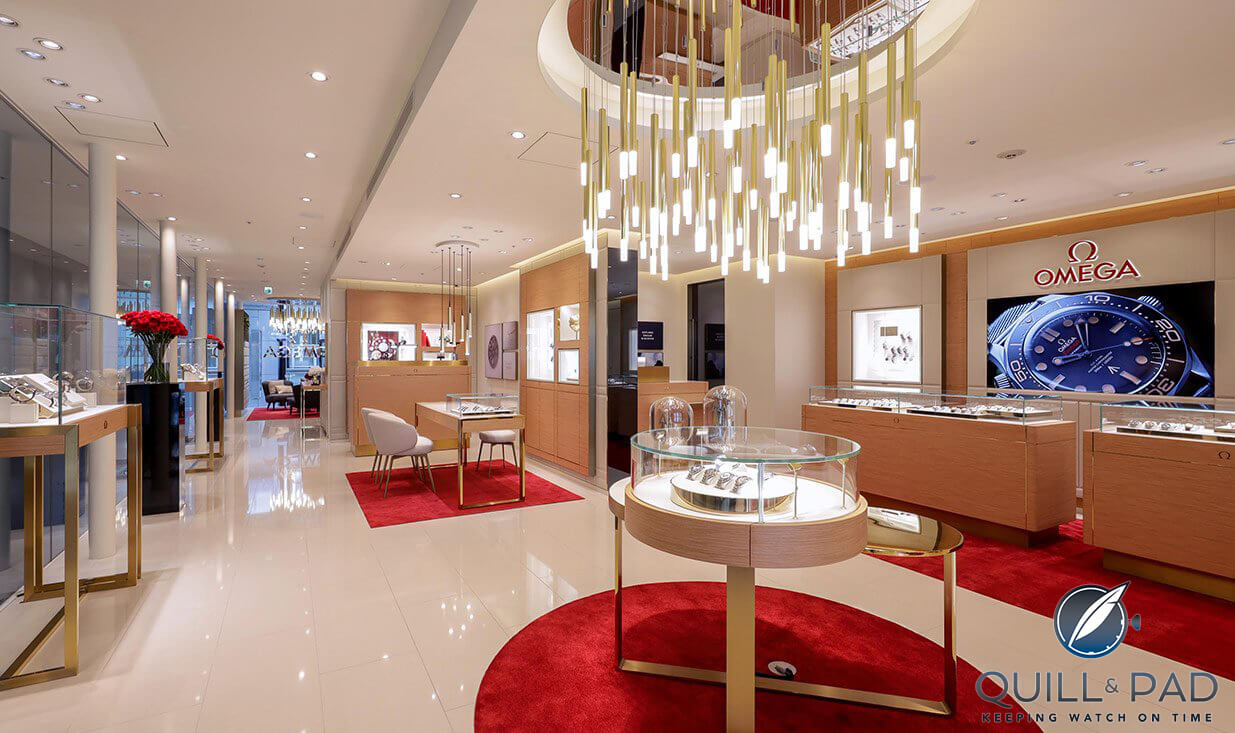
Omega boutique
Nothing about them offers any hint that the Speedmaster went to the Moon or the Planet Ocean Ultra Deep can reach depths of 6,000 meters. I would follow the path of Breitling in making the brand feel more approachable. Breitling has done a great job of making their boutiques a place where everyone feels welcome, whether it is to browse or purchase, while still offering that luxury aspect.
Even looking at other brands, IWC is taking a more modern approach – some new branches in London have a luxury apartment feel and others are minimalistic. Omega has so much to showcase that it almost feels a shame they do not capitalize on it by becoming more creative in their displays.
As I mentioned earlier, by having a Heritage collection, it creates an opportunity to have a museum-like section in each boutique. There could be a Speedmaster section that puts the watch in context by having space-themed displays, and similar for the Seamaster and others.
t would bring more people into the boutiques through intrigue and even comfort that it is not elitist (which the brand certainly isn’t). Finally, by putting pieces into context it can appeal to the imagination of customers of all ages.
Pricing
The final consideration I would make is their pricing structure. At the moment, it feels like there isn’t much of a structure and I find myself looking at models and being surprised by prices both positively and negatively. The most obvious and well-flagged example is the difference between the Aqua Terra and Seamaster Professional 300M. As of July 2023, an Aqua Terra on a bracelet retails for £5,800 and a Seamaster Professional 300M on a bracelet is £5,500.

Omega Seamasters
Considering the 300M has a helium-escape valve, rotating ceramic bezel and ceramic dial with laser-engraved waves, it is hard to understand. The Aqua Terra should be offered at a more competitive price point and become an entry to the brand, similar to how the Datejust and Submariner sit within Rolex. Of course, then there will be specific complications, case materials and other variations of the Aqua Terra taking the price level higher.
Another important factor to consider is the extent of price increases. It’s not just Omega that’s raising prices across the board; Rolex, JLC, and practically every other brand are doing the same. However, the pace of the price increases has been noticeable. I could be biased as it has effectively moved the goalposts of Moonwatch ownership which I was hoping to achieve one day, even so, I still think it is worth pointing out.
In May 2019, the hesalite Moonwatch had a retail price of €4,700 (found on speedywatches.com), but today it is €7,400. While there have been improvements to the watch, such as an updated dial, better bracelet, and Co-Axial 3861 movement, it still amounts to a 57% increase in just four years. In comparison, the Rolex Submariner Date was £6,550 in October 2018 (found on luxewatches.co.uk) and is now £8,650, a 32% increase.
There is an argument to be made for the changes Omega has made. However, I would also be wary of continuing down this path, leaving behind the core fanbase that Omega had for many years before this new wave of interest. The Moonwatch is an accessible (through availability) icon and they are doing a great job at marketing it. They should keep it available to as many people as possible and produce limited editions, the heritage Speedmasters, and examples such as the “Ed White” to appeal to those customers looking to spend more. This is just my partially biased opinion!
Conclusion
Rolex and Omega are the two household names when it comes to luxury watches. Both produced fantastic products that combine quality and heritage. It is no secret that given the extent of reach Rolex has coupled with an array of icons in its collection, it is the go-to brand.
However, more recently, with rising demand outstripping supply for Rolex, there are consumers looking elsewhere when it comes to making a luxury watch purchase. Rolex is in no trouble as nearly every watch they produce is spoken for before reaching the boutiques, but some customers are becoming frustrated by the difficulty of purchasing a watch.
Omega is clearly aware of this and has been making a concerted effort to cater to the needs of both new and existing customers through their marketing, customer experience and ever-improving designs. Furthermore, they are also pushing watchmaking innovation, demonstrating that they can be more than meets the eye. Effectively, they are showing that they can compete on all levels and are reaching for the crown to become the brand of choice for the many.
For more information, please visit www.omegawatches.com/
You might also enjoy:
Rolex Submariner vs. GMT Master II: Small Differences, Difficult Decision
Leave a Reply
Want to join the discussion?Feel free to contribute!

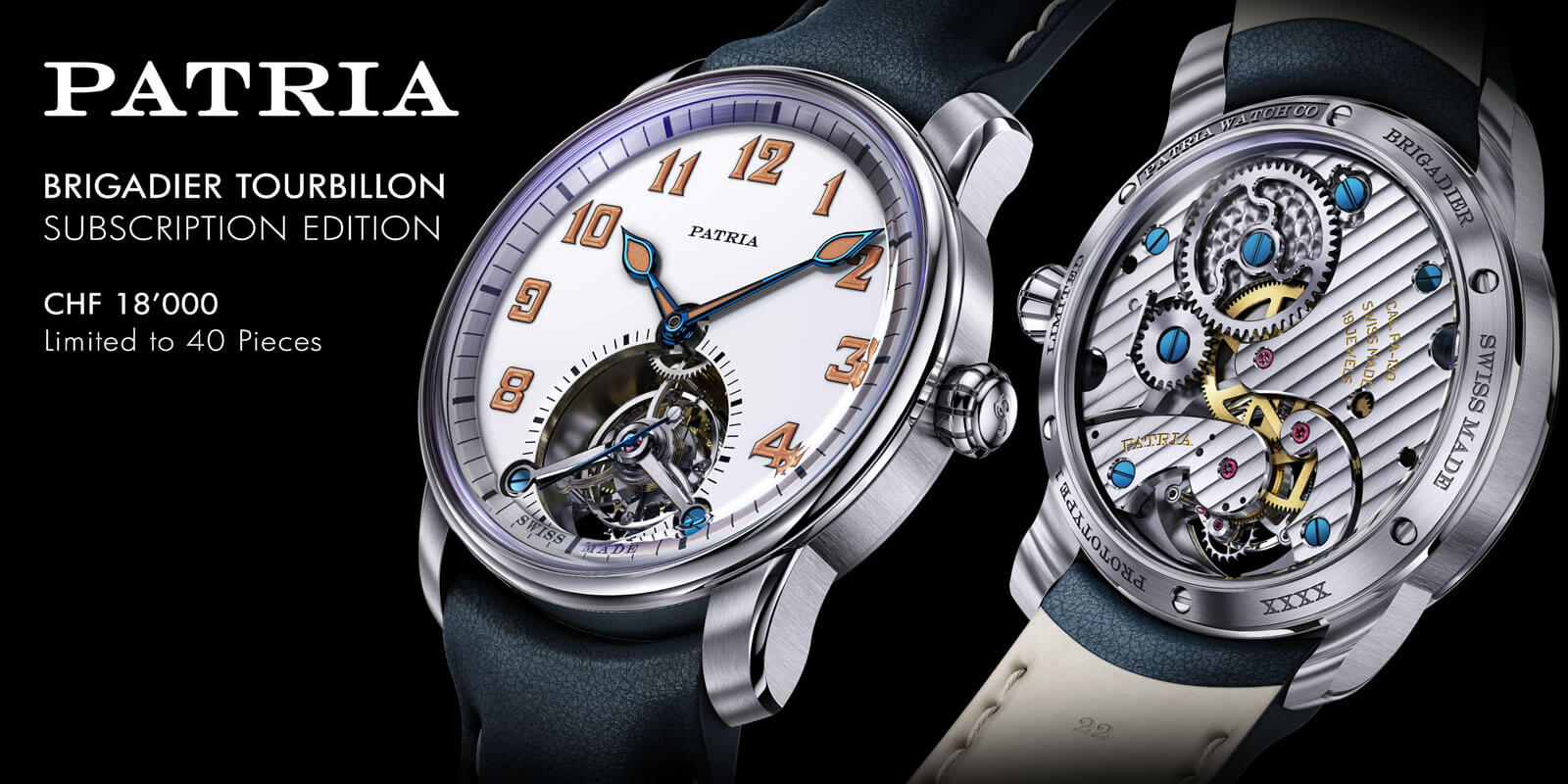
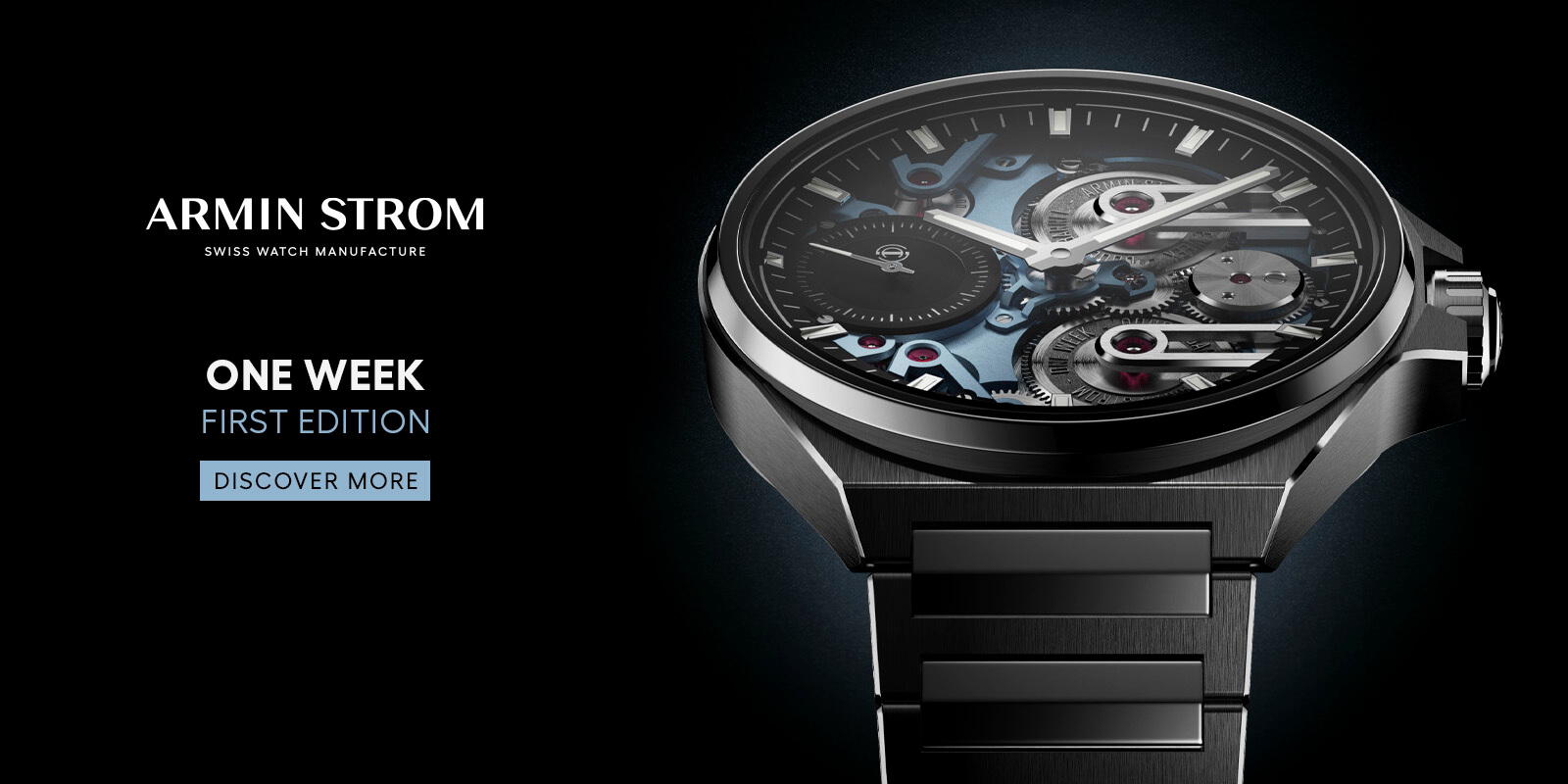
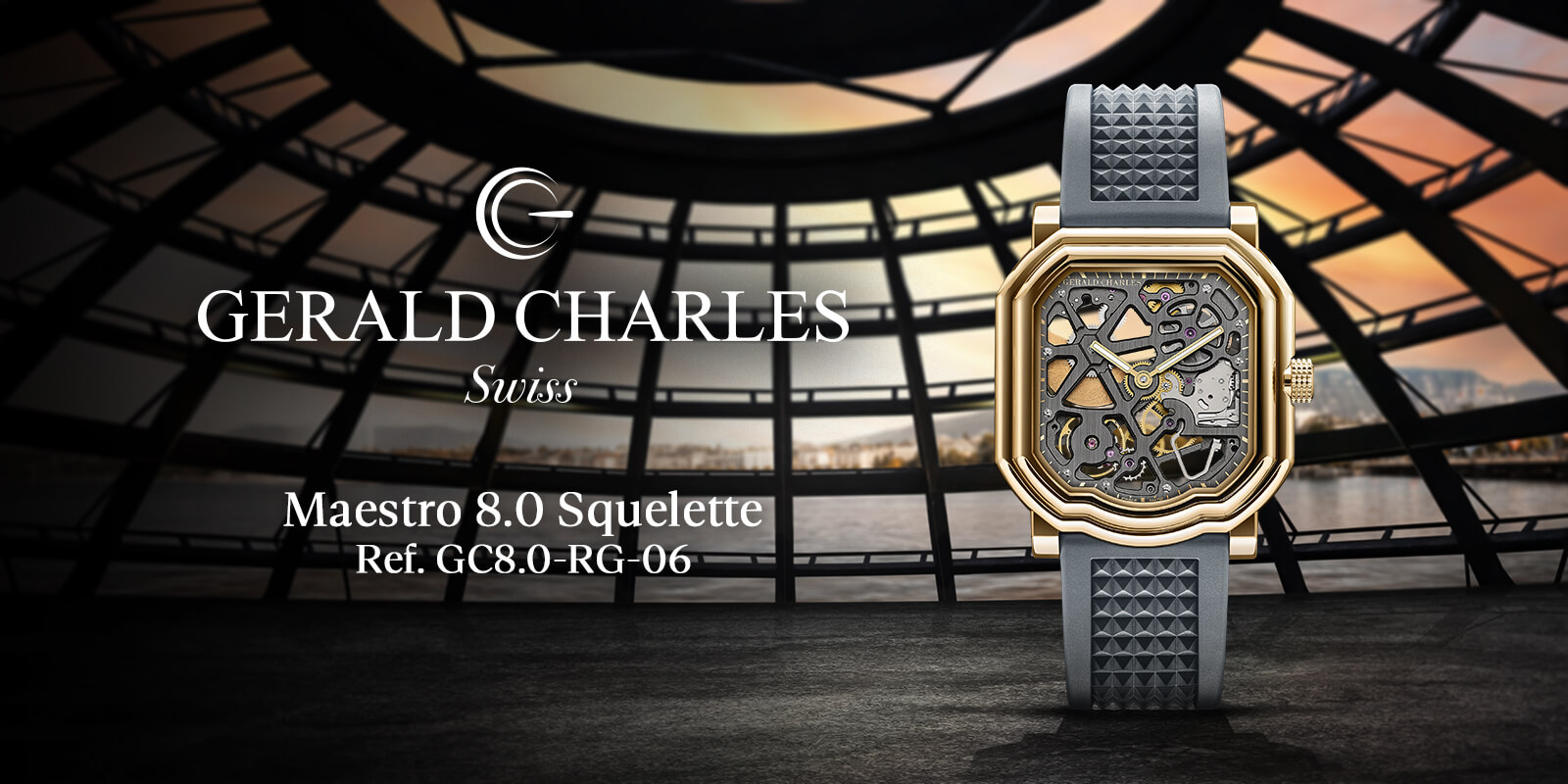


While I would not hesitate to send my Rolex’s in to Rolex for service, my Omega Seamaster Chronograph sits in the safe not functional because I am genuinely afraid to send it in to them for service, I was given the watch by my wife on our wedding day 18 years ago, the watch leaked while we were on our honeymoon in Hawaii I sent it back for warranty service, and thus began an 18 month nightmare that ended with Omega replacing it with a brand new one. I would not hesitate to buy a new Rolex, I will never ever buy another Omega.
Not a good experience but also not a good reason to throw out the baby with the bath water. Lots has changed in 18 years, and more do the past few years at Omega.
Dallas Tx USA
Great in-depth review, Raman Kalra.
Just to give you some background, I am more of a ROLEX collector and Patek Philippe, but it’s incredible how both have changed post Covid-19 era.
In my opinion, it is during successful times for both people and businesses that you really find out what kind of company you are really dealing with and their actions reveal their true colors of who they really are.
Patek Philippe in my opinion has dealt with the demand/supply issue extremely poorly and messy in my opinion. I don’t wish to get into the details too much, but they’ve lost my business. They are extremely distasteful to deal with. The way the prioritize their sales and allocation of timepieces is not transparent and their boutiques require you to purchase non-major branded jewelry from an authorized dealer to eventually have a piece allocated. They disregard involvement, history, education that a customer has gained throughout the years and don’t apply any values to how strong a customer’s connection with the brand is. I have visited their museum in Geneva, have a time piece handed down from my grandfather, have gone to their exhibitions, have one celebratory piece from them that I purchased for a major life event way before the Covid-19 craze, and none of this matters. Not even a “lets place you on a list and hopefully we can get you what you want in 1-5-10 years, nothing!” Most customers in my opinion are wasting their time with this brand. It’s not worth it. In my opinion, it’s better to build your own legacy with another brand.
ROLEX in my experience has been completely the opposite. My authorized dealer is organized in what appears to be a more customer oriented CRM. If you are interested in a ROLEX model, my authorized ROLEX dealer officially records your interest in a specific model and eventually they will call and you are able to purchase the piece. Some models have taken up to 2 years, but this level of customer service is outstanding in my opinion and considering the supply/demand issue. Yes, you can argue ROLEX production is much larger than Patek’s, but that argument hurts Patek even more in my opinion. If that is the case, which it is, shouldn’t Patek be better at logging your interest and keeping you informed and handling that at a much higher level than ROLEX, even when a customer has made it known they are a collector that has an inherited piece and a new piece of their own…
Now on to OMEGA, I support your view in that another formidable competitor to ROLEX is indeed a welcome trend. I’ve always liked OMEGA, but in my opinion, there is always something, albeit small, about the models that I find hard to overcome and like. For example, the Speedmaster line has an incredible rich history, but there are so many references of the same watch that I don’t even know where to start. It’s confusing.
Case in point, I like the Speedmaster, but would like a more traditional 39-40mm size with a clear case-back to see the movement.
It’s difficult to have this combo. I understand it has been produced in the past.
Same thing with the Seamaster, it has improved significantly recently, but I can’t get over the steel bracelet and larger size. Both of
these are excellent time pieces, but I am waiting until they make one I like in both color and size and clear case-back. I also like the
the green Seamaster with. rubber bracelet for example, but the green they chose is almost black! I would love for the green to be
more vibrant. Why so restrained in this case? See what I mean…
The Seamaster Worldtimer is a nice complication, and I would have it all over my wrist if it were a little more elegant and have that
that more under-the-radar nice aesthetic design Patek is famous for; sort of like the Rolex Cellini-1908 style…. Now, if OMEGA
reads this, they will probably love to ask more questions, as I can’t possibly add everything here, but I think they are heading in the
right direction and they are closer than ever to capturing a wider customer base in my opinion. With me it’s just some design
elements are a little more than a hair away before I can start pulling the trigger on those models, but they are closer than ever. The
The gap used to be much wider until just recenlty.
Hope you enjoy my comments and I apologize for my thoroughness!
Cheers!
Hi TheWatchCollector, happy you enjoyed the article.
Thank you for your comment. I really appreciate hearing first hand experiences like this. It is interesting to know how people feel towards brands, and also it seems like we have different experiences for whatever reason. Sorry to hear about your Patek experience. On one hand, it is possible understand that these brands have not be prepared for the demand, but on the other you would expect some recognition for true collectors that don’t necessarily buy a new watch every year.
I completely agree that Omega still has areas where they need to improve. Ultimately, fit and finish is what makes a watch feel good on the wrist, and like you said the Seamaster bracelet needs work. There are some somewhat obvious moves to me in how they can push forward such as that or a smaller Seamaster 300, smaller Speedmaster, thinner movements, better bracelets across the board. Just surprised they haven’t tackled these but they are moving in the right direction and showing their capabilities in design and movements like the Chrono Chime. Their lineup is a bit confusing. I still firmly believe the Heritage collection being separated would make it cleaner and easier to understand. But overall, it sounds like we line up in our opinions!
Thanks again! Raman
Very interesting read! I became an Omega fan in 2008 when I was after my first luxury watch and saw what Omega offered for half the price of Rolex. Regardless of that the Rolex design didn’t really cut it for me and with just two exceptions (GMT II Batman & Ex II with white dial) that hasn’t changed that much. I still like to have a look at what Omega has to offer but expecially the sizes of SMP and PO have increased too much in my opinion. My SMP from 2008 is slim and light, compared with the current models. Back then there was a clear distinction between the relatively dressy and versatile SMP and the more toolish Planet Ocean. But also the first generation of the PO has been much more wearable than the current models. All technological advancements are useless if you cannot wear a watch comfortably. Omega should work towards slimmer and lighter SMPs and POs in my opinion. A Planet Ocean with current materials and technology but size and weight of the 42mm model of the first generation would be an absolute killer.